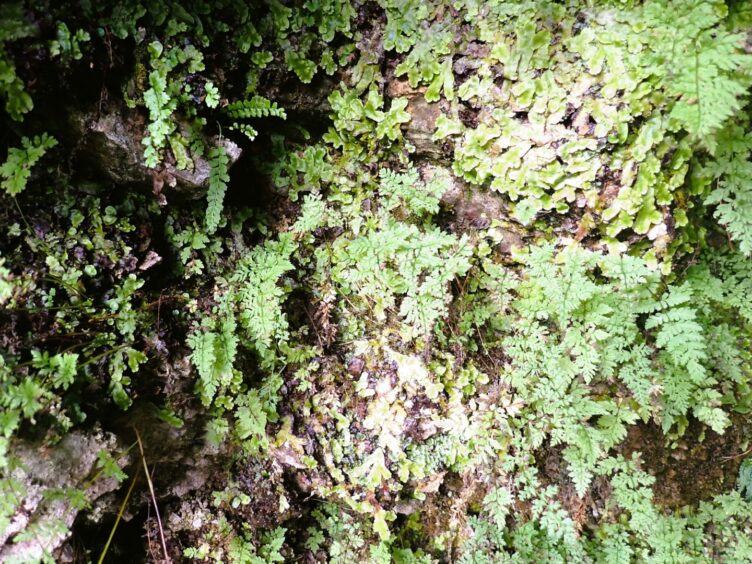It was a remarkable phenomenon – a large tumbling burn, which appeared miraculously from solid rock as if spirited into existence by natural wizardry.
This was a natural spring near the Inchnadamph Bone Caves in Assynt in Sutherland where a subterranean stream emerges from the ground, bubbling up through a deep bed of gravel that is a feature of the limestone geology of the area.
It was a spontaneous creation that made the mind spin in wonderment at the forces which had forged the ground beneath me.
I ambled up the path by the nearby small river towards the bone caves, continually scanning the ridge tops for eagles, but the grey skies remained tantalisingly empty.
On climbing up to the caves, a female common darter dragonfly whizzed past in determined fashion.
Prehistoric past
The caves were an open door to our prehistoric past where brown bear and reindeer bones were unearthed by geologists in the late 1880s.
More recent digs have revealed the remains of other animals that once roamed Scotland, including Arctic fox, lemming, lynx, wolf and wild horse.
The fragment of a polar bear’s skull was even discovered in one cave, which is estimated to be over 20,000 years old.
Some of the bones may have been washed into the caves by melting glaciers, but the caves were also used as a shelter by animals, and later, by people.
Liverworts and small ferns clung tenaciously to the cave wall entrances, themselves primitive plants, which thrive in dark, damp environments.
Liverworts are often overlooked, but they are fascinating small flowerless plants with leaf-like lobes, which appear like a lobed liver, hence the name.
Liverworts produce spores to reproduce instead of flowers and seeds and they provide important microhabitats for tiny creatures.
Firemore Beach
The north-west Highlands continually enthral and inspire, and no more so than a few days previously when I visited Firemore Beach near Poolewe.
After a morning of heavy skies, the clouds lifted, and the sandy beach glowed under the sunshine.
A late fledged young ringed plover, only just able to fly, ran along the shore edge on pattering feet, and soon found company with a pair of sanderlings, which themselves had only recently arrived from their breeding grounds in Greenland.
Sanderlings are diminutive pearly-plumaged waders that are always on the move as they search the wave-lapped shore for invertebrates.
Out at sea bobbed a small group of black-throated divers, still adorned in their summer breeding plumage, and a lesser black-backed gull tumbled high above in the blue sky.
My eyes, however, were drawn to the upper shore, where a drift of pastel-flowered sea rocket swayed in the briny breeze.
I ran my fingers along the one of the plant’s succulent, waxy leaves, which are designed to conserve the meagre water drawn by the roots from the beach sand.
Like the natural spring at Inchnadamph, this sea rocket, too, was a miracle of nature – an evolutionary masterpiece perfectly adapted to flourish in the most challenging of environments.



